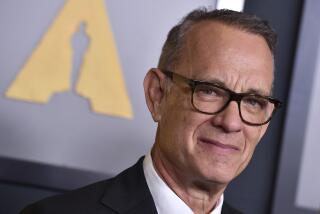10 Years Later, Artificial Heart Technology Gets Second Look
- Share via
Ten years have passed since a University of Utah surgical team stunned the world by implanting the first permanent artificial heart in the chest of medical pioneer Barney Clark.
Clark died 112 days later, and so did four other people who were implanted with the experimental device. With them faded the notion that the human heart could be permanently replaced by a machine.
But in the last decade, mechanical pumps that help the heart without replacing it have come into widespread use, and the government is pumping millions into research on a permanent artificial heart. Even once-banned technology has been resuscitated in a new study of artificial hearts as a means of keeping patients alive while they wait for permanent human transplants.
“I think it’s unfair to have judged them the way we did in those days, expecting that everything was going to be perfect and work out well,” said Dr. Jack G. Copeland, University of Arizona surgeon who in 1985 used a Jarvik-7 in the first successful bridge to transplant. “It was unfair of us to expect that of Barney Clark or of the technology or of the team that put the device in.”
Clark, a 61-year-old retired dentist from Seattle, was dying on Dec. 2, 1982, when a plastic heart then known as the Jarvik-7 replaced his own diseased organ.
He was tethered by two 6-foot hoses to a bulky unit that powered the air-driven heart click-clicking in his chest. The medical community and the public hung on every development as he underwent several operations for a variety of problems before dying of multiple organ failure unrelated to the artificial heart.
He was widely portrayed as a hero who ventured into a medical no-man’s-land more for the benefit of science than himself. Clark’s emphysema and poor kidney function virtually ensured that he would die even if the operation succeeded.
To avoid criticism of ghoulish experimentation, the U.S. Food and Drug Administration and the hospital’s review panel had insisted that the first artificial heart go to a patient too old for a regular transplant or any alternative therapy.
“We had to find a patient that made the experiment fail in order to do it,” said Clark’s surgeon and friend, Dr. William C. DeVries. “We had to pick a patient that was almost dead.”
Clark was 11 years over the cutoff age then in effect for a heart transplant.
Today, patients older than Clark receive transplants routinely, and survival rates have soared. Yet only about 2,000 donor hearts are available for transplant each year, while 35,000 Americans need one--or an artificial heart--said Dr. Willem Kolff, director of the artificial organs division at the University of Utah’s Salt Lake City medical center.
There are estimates that 200,000 people will need a substitute heart by 2010.
Clark never left the hospital after his transplant, suffering seizures, kidney and lung problems.
Still, his experience excited everyone involved, DeVries recalled.
Four more Jarvik implants were performed, three by DeVries. All the patients died, although one lived for 620 days.
Despite some “real heady days” for DeVries, the artificial heart came under increasing criticism from other surgeons, bioethicists, the public and the media, all contending that the technology wasn’t advanced enough to use on humans.
“It hurt. I got involved in that guy, I lived with him for 112 days,” DeVries said from Louisville, Ky. “It’s really difficult when someone calls your baby ugly.”
In 1984, the FDA changed its stance, authorizing use of Jarvik devices only as a bridge so dying patients could be transplanted with human hearts. Only DeVries, who had been authorized to do seven permanent implants, was exempted, but he performed no more.
The artificial heart was designed by Dr. Robert Jarvik, a member of the Utah medical team who now does independent research in New York City. He also was one of the original owners of Symbion Inc., a company that was formed in Salt Lake City in 1976 and licensed by the university to manufacture the hearts under the name Symbion-7.
In January, 1990, the FDA withdrew approval for continued use of the still-experimental devices except for emergencies. The agency accused Symbion of poor monitoring in 26 medical centers that used the heart, failure to report problems and to conduct pre-delivery testing and poor quality control.
Symbion went out of business last year, and all use of the Symbion-7 halted.
In retrospect, Jarvik and others in the field say, it would have been better to use the Jarvik-7 as a bridge from the start. But the FDA had turned DeVries down on two such proposals because Utah was not a transplant center.
DeVries said he stabbed holes in the diaphragms of 15 Symbion hearts in his inventory, “one of the saddest days of my life,” under the FDA’s 1991 order.
Several other pumps that do not replace the heart, known as ventricular assist devices, or VADs, are in widespread use--as bridges or to allow the heart to recover.
And research continues on new, permanently implantable and internally powered replacement hearts. Four groups receive a total of $5 million annually from the National Heart, Lung and Blood Institute in Bethesda, Md., for such research.
The government has given more than $35 million in artificial heart research grants since 1977 and close to $300 million on all circulatory assist development since 1964.
But a new-generation total replacement heart “is still a long way away,” said Dr. Claude L’Enfant, director of heart institute. He said he expects a “mechanically reliable” device ready for clinical testing by 2000.
The Symbion technology has been resurrected with FDA approval of a study by CardioWest, a joint venture of Arizona’s University Medical Center and Utah’s Medforte Research Foundation. CardioWest acquired the technology from Symbion before the heart-maker liquidated.
It will oversee about 30 artificial heart-bridging implants at half a dozen medical centers, trying for transplants within five to 30 days. The researchers will try to prove that the devices work and belong on the surgery-room shelf again.
Dr. Don B. Olsen, head of Utah’s artificial heart research lab, said he was concerned when the FDA withdrew its approval that the public would perceive the artificial heart as a failure. Instead, he said, it “had been extremely successful.”
He and Copeland, among others, insist that the heart has worked well, and that Symbion’s faulty data-keeping was the principal problem.
According to figures from the Minneapolis Heart Institute, through July, 1991, 11 models of total artificial hearts were implanted worldwide into 221 patients as bridges to transplantation, and 187 of the patients got Symbion hearts. Fifty-six of the 221 people survived one year.
For DeVries, the Utah surgeon, the return of the Symbion model cannot come too soon.
“I had a patient that died yesterday--on the operating table,” DeVries said. “And he wouldn’t have died . . . if he had the artificial heart.”
He credits Clark, who had turned 62 when he died on March 23, 1983, for opening up the possibilities of the artificial heart: “Barney Clark put his foot in the door.”






